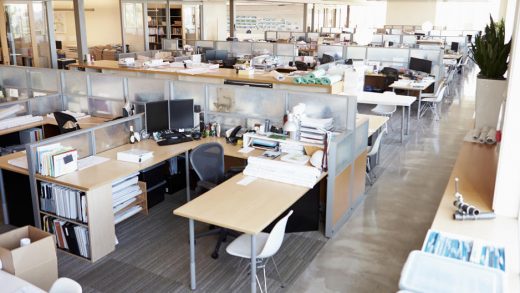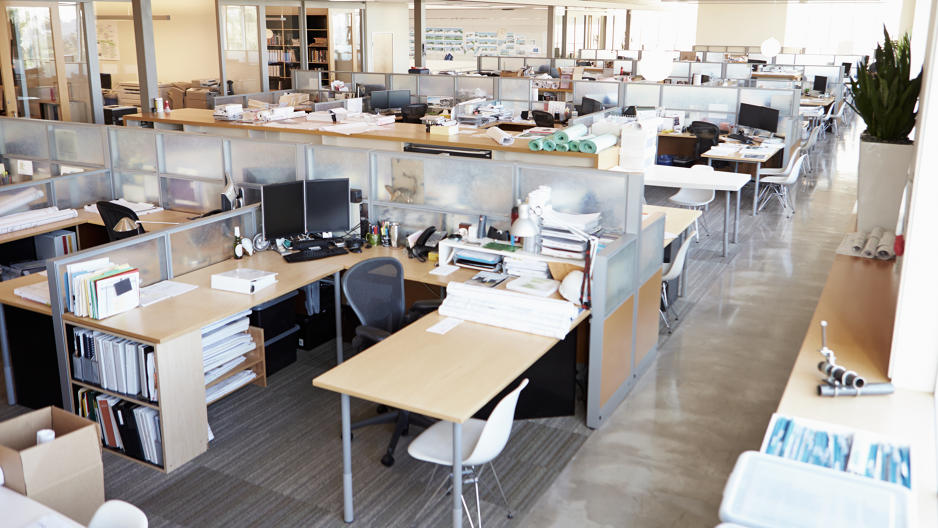Is Your Office Layout Causing Gender Bias?
When it comes to climbing the corporate ladder, women get less access to career-advancing opportunities, they’re less likely to see fellow women in senior management, and they’re less confident that they’ll reach the top ranks, according to the Women in the Workplace 2016 study, conducted by LeanIn.Org and McKinsey & Company.
In this situation, less is definitely not more, but could redesigning the workplace help fix the problem?
Research by the University of Toronto published in Group Dynamics: Theory, Research and Practice found that work teams made up mostly of women tend to be egalitarian, sharing leadership roles, while work groups made up mostly of men favor hierarchical structures.
Most office layouts are set up to favor the men’s work style, says Elizabeth Von Lehe, managing director of brand strategy and architecture at the New York City-based innovation and design studio ICRAVE.
“Traditional office models are very hierarchal and segmented, with private offices that keep management separated,” she says. “This design leads to a lack of mentorship and interactions, which can be a contributing factor to women not advancing—they simply don’t have as much visibility.”
Separation could also impact quality of work and productivity. New research from the University of Calgary found that stress levels in female mice increase when there is a lack of a social network.
“Isolating the female mice from their litter mates for less than a day led to the release of a signaling chemical called ‘corticosterone,’ which is produced in response to stressful situations,” writes Laura Senst, lead author of the study. “This reaction was not evident in their male counterparts.”
The Solution
Office design has been changing from traditional, closed spaces to open environments. “What leads to greater success for all workers, but especially women, is flexibility and customization,” says Von Lehe.
As the only female director at her company, Von Lehe strives to create more opportunity for women by redesigning office workspaces to create equal opportunity and visibility.
“I am not going to say the solution is to design a great space for women,” says Von Lehe. “The answer is to design a good space for people in the workplace to advance—and half of them happen to be women.”
The ICRAVE office, for example, has movable wall sections and sliding doors, allowing the office space to be customized according to the needs of the moment.
“Women leading projects need to be able to meet with important clients and have an impressive setting that shows her ability and achievements,” says Von Lehe. “The space also needs the ability to transform based on the size of the presentation and the setup needed. Open spaces also offer visibility and more opportunities to take ownership of your work.”
But closed spaces are needed, too. “We need spaces that are more private, which allow executive mentorship,” Von Lehe points out. “Mentoring elevates people and can lead to greater equality, better management, a better end product, and better output from the worker.”
Why Companies Should Change
Smart companies will recognize the differences between men and women and their needs in a work environment, says Julie Gauthier, director of the Houston-based architecture firm Lauckgroup. “This becomes much more complicated when actually put into practice,” she says. “Managing individual preferences when trying to maintain a standard ‘kit of parts’ for offices and workstations that accommodate the majority of users often takes precedent, especially for large corporations.”
Health and wellness of both genders is a topic that is discussed in the planning stages of any corporate project, adds Gauthier. She believes that another way to build loyalty and retention is by considering designs and strategies that will ensure wellness and how the resulting space and programming would support the specific gender demographics of an organization. “Where workplace design is developed in conjunction with human resources programming,” she explains, “the result can be an environment that values the human capital that the space is meant to support.”
To get ahead, businesses can no longer lean on old models, says Von Lehe. “We have to design for future flexible workspace that is supportive of all workers,” she says. “When we marry that with other operational activities, we can expect that change to solve a large amount of ingrained problems.”
Related Video: Why Can’t We Fix The Gender Wage Gap?
Fast Company , Read Full Story
(34)














